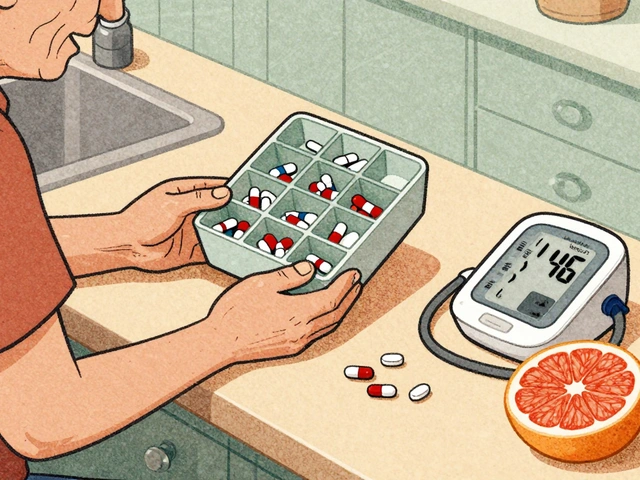Warfarin: What It Is, How It Works, and What You Need to Know
When you hear Warfarin, a vitamin K antagonist used to prevent dangerous blood clots. Also known as coumadin, it has been the go-to blood thinner for decades, especially for people with atrial fibrillation, artificial heart valves, or a history of deep vein thrombosis. Unlike newer drugs, Warfarin doesn’t come with a fixed dose—it’s personal. Your body’s response changes based on diet, other meds, even how much you sleep. That’s why INR monitoring, a blood test that measures how long it takes your blood to clot is non-negotiable. Doctors use this number to adjust your dose, keeping you safe from clots without risking dangerous bleeding.
Warfarin doesn’t work alone. It’s part of a system. Vitamin K, a nutrient found in leafy greens like kale and spinach directly fights Warfarin’s effect. Eat more greens one week, your INR drops. Eat less the next, your INR spikes. It’s not about avoiding veggies—it’s about keeping intake steady. Then there’s Eliquis, a direct oral anticoagulant that doesn’t need regular blood tests. Many people switch from Warfarin to Eliquis because it’s simpler, but it’s not always cheaper or covered by insurance. And while Warfarin has been around since the 1950s, its interactions are still tricky. Antibiotics, painkillers, even herbal supplements like St. John’s wort can throw your levels off. That’s why you need to tell every doctor, pharmacist, and even your yoga instructor what you’re taking.
There’s no magic fix with Warfarin. It’s not about taking a pill and forgetting it. It’s about staying aware. Tracking your diet. Remembering your blood test dates. Knowing the signs of bleeding—unusual bruising, pink urine, headaches that won’t quit. And if you’ve been on it for a while, you’ve probably seen the shift in treatment: more people now choose Eliquis, Xarelto, or Pradaxa because they’re easier. But Warfarin still has its place. It’s cheaper. It’s reversible with vitamin K or fresh plasma. And for some conditions—like mechanical heart valves—it’s still the gold standard. The posts below give you real comparisons, practical tips, and stories from people who’ve lived with it. Whether you’re just starting out or have been on it for years, you’ll find something that helps you take control.










